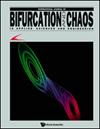具有非光滑发病率的 SIS 流行病模型中的松弛振荡
IF 2.3
4区 数学
Q2 MATHEMATICS, INTERDISCIPLINARY APPLICATIONS
引用次数: 0
摘要
在本研究中,我们通过引入片断平稳发病率来扩展 SIS 流行病模型。通过假设人口参数远小于疾病相关参数,提出的模型被转换为一个慢-快系统。利用几何奇异扰动理论和进入-退出函数,我们证明了围绕模型唯一正平衡的两个弛豫振荡共存。我们还进行了数值模拟来验证我们的理论结果。本研究提出的现象可以解释为什么几种传染病会在几乎绝迹多年后再次出现。本文章由计算机程序翻译,如有差异,请以英文原文为准。
Relaxation Oscillations in an SIS Epidemic Model with a Nonsmooth Incidence
In this study, we extend an SIS epidemic model by introducing a piecewise smooth incidence rate. By assuming that the demographic parameters are much smaller than the disease-related ones, the proposed model is converted to a slow–fast system. Utilizing the geometrical singular perturbation theory and entry-exit function, we prove the coexistence of two relaxation oscillations surrounding the unique positive equilibrium of the model. Numerical simulations are performed to verify our theoretical results. The phenomenon presented in this study can be a potential explanation for that several infectious diseases can re-emerge many years after being almost extinct.
求助全文
通过发布文献求助,成功后即可免费获取论文全文。
去求助
来源期刊
CiteScore
4.10
自引率
13.60%
发文量
237
审稿时长
2-4 weeks
期刊介绍:
The International Journal of Bifurcation and Chaos is widely regarded as a leading journal in the exciting fields of chaos theory and nonlinear science. Represented by an international editorial board comprising top researchers from a wide variety of disciplines, it is setting high standards in scientific and production quality. The journal has been reputedly acclaimed by the scientific community around the world, and has featured many important papers by leading researchers from various areas of applied sciences and engineering.
The discipline of chaos theory has created a universal paradigm, a scientific parlance, and a mathematical tool for grappling with complex dynamical phenomena. In every field of applied sciences (astronomy, atmospheric sciences, biology, chemistry, economics, geophysics, life and medical sciences, physics, social sciences, ecology, etc.) and engineering (aerospace, chemical, electronic, civil, computer, information, mechanical, software, telecommunication, etc.), the local and global manifestations of chaos and bifurcation have burst forth in an unprecedented universality, linking scientists heretofore unfamiliar with one another''s fields, and offering an opportunity to reshape our grasp of reality.

 求助内容:
求助内容: 应助结果提醒方式:
应助结果提醒方式:


